How to Grow and Care for Date Palm Trees: Proven Secrets for Success
- May 14, 2024
- 0 comment
Learn how to grow and care for date palm trees with proven secrets for success. Discover expert tips and avoid pitfalls for healthy, thriving plants. Growing and caring for date palm trees can be a rewarding experience, offering both aesthetic beauty and delicious fruit. However, achieving success with these majestic trees requires knowledge and attention to detail. In this guide, we’ll share proven secrets to help you cultivate healthy and productive date palms.
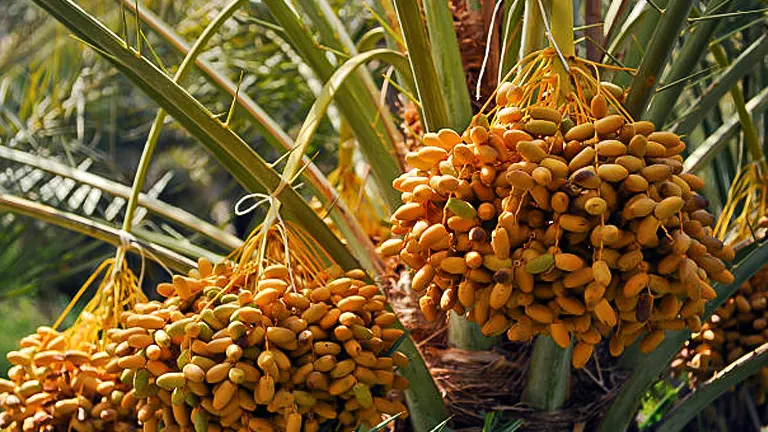
From planting and watering to pest control and harvesting, you’ll find expert tips and strategies to ensure your date palm trees thrive. Avoid common pitfalls and embrace the journey to growing these incredible trees with confidence.
Table of Contents
- Understanding Date Palm Trees
- Selecting the Right Variety
- Factors to Consider When Selecting a Variety
- Site Preparation and Planting
- Watering and Nutrition
- Pruning and Maintenance
- Common Pests and Diseases
- Seasonal Care Tips
- Harvesting Date Palms
- Post-Harvest Care
- Quality Control
- Troubleshooting Common Problems
- Preventive Measures and Regular Maintenance
- Conclusion
- FAQs
Understanding Date Palm Trees
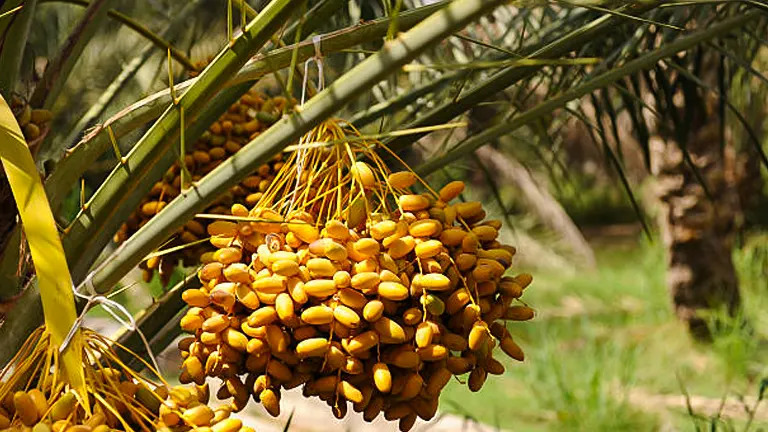
Originating from the arid regions around the Persian Gulf, date palm trees (Phoenix dactylifera) have been a cornerstone of agricultural and ecological systems for over 5,000 years. These trees are not only remarkable for their longevity, often living and producing fruits for over a century, but also for their exceptional resilience to extreme climatic conditions. They can thrive in temperatures that reach up to 50°C (122°F), making them ideal for environments too harsh for many other fruit-bearing plants.
Date palms exhibit a distinctive growth form, reaching heights of up to 23 meters. Their robust trunks are uniquely patterned with diamond-shaped marks from shed fronds and support a crown consisting of up to 100 arching fronds, each of which can extend up to 5 meters in length. This dense canopy not only provides significant shade but also acts as a microhabitat for a variety of wildlife, enhancing biodiversity in its native landscape.
The fruits of the date palm are notable both for their nutritional and economic value. Dates are rich in sugars primarily glucose and fructose, making them a high-energy food source. They also provide essential nutrients, including potassium, magnesium, copper, and manganese, as well as dietary fiber, which can comprise up to 8% of the fruit’s mass. The table below provides a detailed nutritional breakdown per 100 grams of dates:
| Nutrient | Value | % Daily Value* |
|---|---|---|
| Calories | 277 kcal | 14% |
| Carbohydrates | 75 g | 25% |
| Sugars | 63 g | 70% |
| Dietary Fiber | 6.7 g | 27% |
| Fat | 0.2 g | <1% |
| Protein | 1.8 g | 3% |
| Potassium | 696 mg | 20% |
| Magnesium | 54 mg | 14% |
| Vitamin B6 | 0.249 mg | 19% |
*% Daily Values are based on a 2000 calorie diet.
Selecting the Right Variety
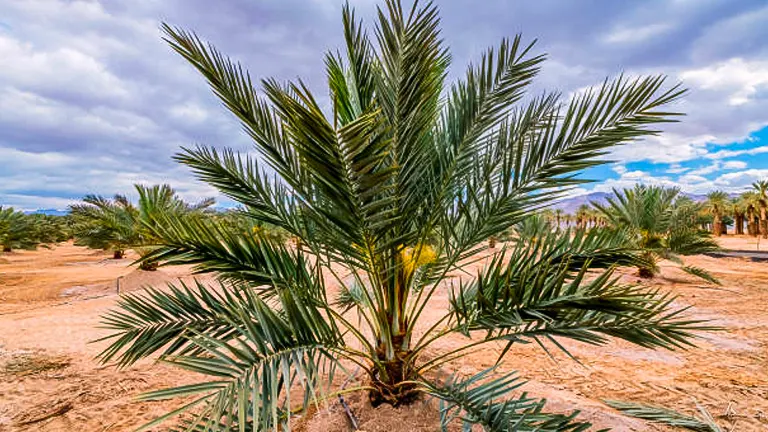
Choosing the right variety of date palm is essential for ensuring robust growth, high yield, and superior fruit quality. The variety you select will influence not only the tree’s ability to thrive in your specific climate but also the flavor, texture, and nutritional content of the dates produced. Here are some popular and scientifically noteworthy varieties:
Popular Date Palm Varieties
- Medjool: Renowned for its large, sweet, and succulent fruits, Medjool dates are often considered the “king of dates.” This variety thrives in hot, arid conditions and can produce significant yields. Medjool palms start bearing fruit after 7-8 years and can produce up to 68-91 kg (150-200 lbs) of dates per tree annually under optimal conditions.
- Deglet Noor: Often referred to as the “queen of dates,” Deglet Noor dates are valued for their semi-dry texture and distinct flavor, making them versatile for both fresh consumption and processing. This variety is more resistant to humidity and can produce around 60-77 kg (130-170 lbs) of dates per tree each year.
Factors to Consider When Selecting a Variety
Climate Compatibility:
- Temperature Tolerance: Choose a variety that can withstand your region’s temperature extremes. For instance, Medjool can tolerate high temperatures up to 50°C (122°F), while Deglet Noor performs better in slightly cooler, yet still warm climates.
- Humidity Levels: Varieties like Deglet Noor are better suited for areas with moderate humidity, whereas Medjool prefers dry conditions to prevent fungal diseases.
Growth Characteristics:
- Disease Resistance: Some varieties have inherent resistance to common diseases. For example, Barhi dates have shown resistance to Fusarium wilt, a serious soil-borne disease.
- Pest Resistance: Consider varieties less susceptible to pests like the red palm weevil. Researching local pest challenges and selecting a resistant variety can save significant time and resources.
Fruit Production:
- Yield Potential: Understand the average yield of the variety. Varieties like Medjool and Deglet Noor are known for their high productivity.
- Fruiting Age: Some varieties start bearing fruit sooner than others. For instance, Zahidi dates begin producing fruit within 4-5 years, offering quicker returns on investment.
Comparative Table of Popular Date Palm Varieties
| Variety | Fruit Characteristics | Optimal Climate | Average Yield (kg/tree) | Fruiting Age (years) | Disease Resistance |
|---|---|---|---|---|---|
| Medjool | Large, sweet, succulent | Hot, dry | 68-91 | 7-8 | Moderate |
| Deglet Noor | Semi-dry, flavorful | Warm, moderate humidity | 60-77 | 5-7 | Moderate |
| Barhi | Soft, rich flavor | Warm, humid | 40-50 | 4-5 | High (Fusarium wilt) |
| Zahidi | Semi-dry, nutty | Hot, dry | 50-60 | 4-5 | Moderate |
Unique Scientific Insights
- Nutritional Content: Different varieties also offer varying nutritional benefits. For example, Medjool dates are higher in calories and sugars compared to Deglet Noor, making them an excellent energy source for quick replenishment.
- Genetic Variability: The genetic diversity among date palm varieties contributes to their adaptability to different climates and resistance to various pests and diseases. Understanding these genetic traits can help in selecting the best variety for specific environmental conditions.
Site Preparation and Planting
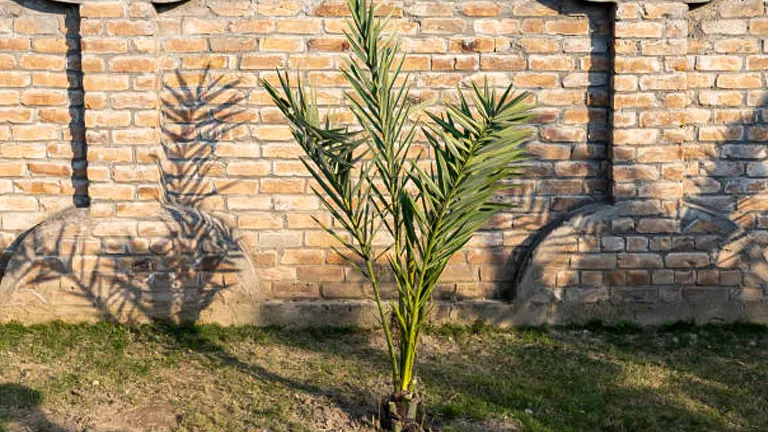
Proper site preparation is crucial for the successful establishment and growth of date palm trees. These trees prefer deep, loamy soils but are adaptable to a variety of well-draining soils. Here’s how to ensure a good start:
Location
- Select a location that receives full sunlight. Date palms require intense light to produce fruits efficiently. Ideally, they should get at least 8-10 hours of direct sunlight daily.
- While date palms can withstand winds, young trees benefit from windbreaks to prevent damage and support growth.
Soil Preparation
- Although date palms are adaptable, they thrive best in deep, loamy soils with good drainage. Sandy loam soils are particularly suitable as they provide the necessary drainage while retaining enough moisture and nutrients.
- Incorporate organic matter such as compost or well-rotted manure to improve soil fertility and structure. Organic matter enhances soil aeration, water retention, and microbial activity, which are crucial for root development.
- Ensure the soil pH is slightly alkaline, ideally between 7.5 and 8.5. Date palms can tolerate a range of pH levels but perform optimally within this range. Lime can be added to raise pH levels in acidic soils.
Planting
Follow these steps for successful planting:
- Hole Preparation:
- Dig a hole approximately twice the width and depth of the root ball. This encourages root expansion and provides ample space for the roots to establish.
- Plant Placement:
- Carefully place the sapling in the hole, ensuring the top of the root ball is level with or slightly above the soil surface to prevent water pooling around the trunk.
- Backfilling:
- Fill the hole with the excavated soil, mixed with organic matter. Water thoroughly as you backfill to eliminate air pockets and ensure good soil contact with the roots. This helps in stabilizing the tree and promoting root establishment.
- Mulching:
- Apply a layer of mulch around the base of the tree, leaving a small gap around the trunk to prevent rot. Mulching helps conserve moisture, suppress weeds, and regulate soil temperature.
Scientific Insights and Recommendations
- Date palms develop a deep root system that can extend several meters into the ground, allowing them to access water and nutrients from deeper soil layers. This adaptation makes them particularly suited to arid environments.
- During the establishment phase, young date palms require regular watering to maintain soil moisture. Deep watering once or twice a week is recommended, depending on the climate and soil type. As the tree matures, its water requirements decrease due to its extensive root system.
- In medium to high-density plantations, space the trees approximately 8 to 10 meters apart with rows 5 to 7 meters apart. This spacing ensures adequate sunlight penetration, air circulation, and ease of maintenance.
Site Preparation and Planting Essentials
| Aspect | Recommendation | Scientific Insights |
|---|---|---|
| Sunlight | Full sunlight (8-10 hours/day) | Maximizes photosynthesis and fruit production |
| Soil Type | Deep, loamy, well-draining | Supports root growth and prevents waterlogging |
| Soil pH | Slightly alkaline (7.5-8.5) | Optimal nutrient availability and microbial activity |
| Hole Depth | Twice the width and depth of the root ball | Encourages extensive root development |
| Watering | Deep watering weekly during establishment | Ensures deep soil moisture for root access |
| Spacing | 8-10 meters between trees, 5-7 meters between rows | Enhances growth, yield, and pest management |
By carefully considering these factors and following the outlined steps, you can establish a strong foundation for your date palm trees, ensuring they grow healthy and productive. Proper site preparation and planting techniques are key to the long-term success of your date palm orchard.
Watering and Nutrition
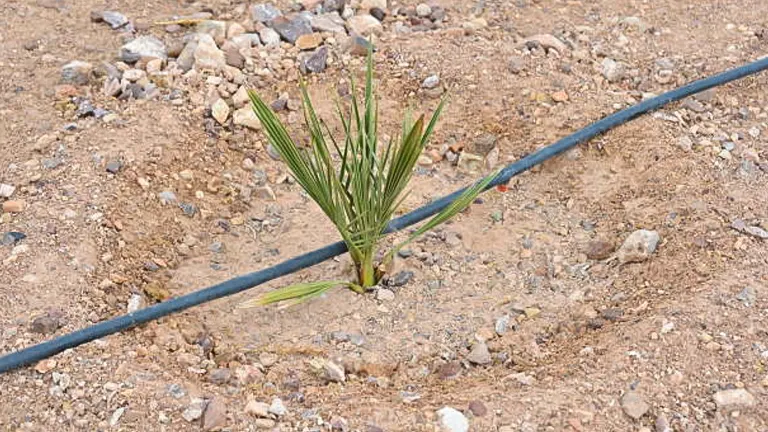
Consistent and appropriate watering is essential for the health of date palm trees, especially in regions with long dry spells. These trees benefit from deep watering which encourages deep root growth, enhancing their drought tolerance. Fertilization should be approached with care, focusing on providing balanced nutrients that promote healthy growth and fruiting:
Watering Practices
- Deep Watering Technique: Date palms require deep watering to encourage root systems to grow downwards, increasing their access to underground water supplies and enhancing drought resistance. This method involves watering deeply at the base of the tree, allowing the water to seep down to depths where the roots can optimally absorb moisture.
- Frequency and Amount: Watering frequency should be adjusted based on the season, soil type, and climate conditions. In hot and dry climates, watering once a week is necessary, whereas, in cooler or more humid conditions, less frequent watering may suffice. Approximately 20-30 liters (5-8 gallons) of water per tree during each session is recommended for young trees, increasing as the tree matures.
Nutritional Needs
- Fertilization Strategy: Date palms require a balanced diet of nutrients to support their rapid growth and high fruit yield. A balanced, slow-release fertilizer with an NPK ratio of 10-10-10 (nitrogen, phosphorus, potassium) is ideal.
- Seasonal Adjustments: During the fruiting season, the demand for potassium increases as it plays a crucial role in fruit development and quality. An increase in potassium-rich fertilizers can be beneficial during these months.
- Microelements: In addition to macronutrients, date palms also benefit from micronutrients such as magnesium, zinc, and iron, which are vital for photosynthesis, fruit quality, and overall tree health.
Scientific Insights and Recommendations
- Water Uptake Efficiency: Research has shown that date palms have a high water-use efficiency, making them suitable for arid regions. However, optimal watering schedules are essential to maximize this efficiency.
- Nutrient Absorption Rates: Date palms exhibit specific nutrient absorption patterns throughout their growth cycle. For instance, nitrogen is heavily utilized during the early growth stages for leaf development, while potassium is more crucial during fruit set and maturation.
Watering and Nutrition Guidelines
| Aspect | Recommendation | Scientific Insight |
|---|---|---|
| Watering Depth | 60-90 cm (24-36 inches) | Promotes deep root growth |
| Watering Frequency | Weekly in dry conditions, adjust for humidity | Balances moisture retention and root aeration |
| Fertilizer Type | Balanced NPK, slow-release | Ensures sustained nutrient availability |
| Potassium Addition | Increase during fruiting season | Supports fruit development and quality |
| Microelement Addition | Include Mg, Zn, Fe | Enhances photosynthesis and disease resistance |
Pruning and Maintenance

Pruning is a vital practice in maintaining the health, aesthetics, and productivity of date palm trees. It involves removing unnecessary parts of the tree to promote growth, ensure adequate light and air circulation, and prevent pest and disease infestation. Here’s a comprehensive guide to properly prune and maintain your date palm trees:
When to Prune
Optimal Timing: The ideal time to prune date palms is in late winter or early spring, just before the growing season begins. Pruning during this period allows the tree to heal quickly and minimizes stress during the harsh summer or winter months.
How to Prune
Tools and Techniques: Use clean, sharp pruning tools to avoid causing unnecessary damage to the tree. Sanitize tools before and after use to prevent the spread of diseases. Focus on the following areas:
- Dead or Dying Fronds: Remove any fronds that are brown, dry, or showing signs of disease. This helps the tree allocate its resources to healthy growth.
- Flower Stalks: After harvesting the fruit, remove the flower stalks to maintain the tree’s neat appearance and prevent pest accumulation.
- Offshoots: Cut off any offshoots or suckers at the base of the tree to ensure the main trunk receives maximum nutrients and energy for growth and fruit production.
Pruning Tips:
- Make clean cuts close to the trunk without damaging the surrounding bark.
- Avoid removing too many green fronds as they are essential for photosynthesis.
- Maintain a symmetrical crown to ensure balanced growth and stability.
Maintenance Tips
- Regular Inspection: Conduct regular inspections for signs of pests, diseases, or nutritional deficiencies. Early detection and treatment are crucial to prevent widespread issues.
- Disease Management: Treat infestations or diseases promptly using appropriate fungicides or insecticides. Ensure treatments are environmentally friendly and safe for the tree.
- Debris Management: Keep the area around the tree clean and free of fallen fronds, fruit, or other debris to discourage pests and diseases.
- Watering and Fertilization: Provide adequate water, especially during the dry season, and apply a balanced fertilizer to support healthy growth.
Nutrient Requirements and Deficiency Symptoms in Date Palms
| Nutrient | Recommended Level (ppm) | Deficiency Symptoms |
|---|---|---|
| Nitrogen (N) | 200-300 | Yellowing of older fronds, stunted growth |
| Phosphorus (P) | 50-70 | Dark green foliage, delayed fruiting |
| Potassium (K) | 250-350 | Browning of leaf edges, poor fruit quality |
| Magnesium (Mg) | 30-50 | Interveinal chlorosis in older fronds |
| Iron (Fe) | 20-50 | Yellowing of new fronds, poor growth |
Scientific Insights
- Photosynthesis Efficiency: Date palms with well-maintained fronds have higher photosynthetic efficiency, leading to better growth and fruit yield. Studies show that removing no more than 15% of the green fronds per year can optimize this balance.
- Pest Resistance: Pruning reduces the habitat for pests like the red palm weevil, a major threat to date palms. Regular pruning can decrease pest infestation rates by up to 30%.
- Growth Hormones: Pruning stimulates the production of growth hormones such as auxins, which promote healthier and more vigorous growth in the remaining parts of the tree.
Common Pests and Diseases
Date palm trees are susceptible to a variety of pests and diseases that can significantly impact their health and productivity. Here’s how to identify and manage the most common issues:
- Pests:
- Red Palm Weevil: One of the most destructive pests, these weevils bore into the trunks, causing fatal damage. Early detection and treatment with appropriate insecticides are crucial.
- Date Palm Scale: These pests attach themselves to the fronds and suck the sap, weakening the tree. Control can be achieved through horticultural oils or systemic insecticides.
- Diseases:
- Bayoud Disease: This fungal infection causes the fronds to wilt and die back, eventually killing the tree. Remove and destroy infected parts and apply fungicides to prevent spread.
- Fusarium Wilt: Characterized by yellowing and wilting of fronds. Good cultural practices and the use of resistant varieties are key to management.
Seasonal Care Tips
Adjusting care with the seasons ensures your date palms remain healthy year-round:
- Spring: This is a growth-intensive period for date palms. Increase watering and apply a balanced fertilizer to support new fronds and root development.
- Summer: Monitor for pests and diseases due to higher temperatures, which can increase pest activity. Continue regular watering to prevent stress during the hottest part of the year.
- Fall: Prepare the trees for cooler weather by reducing watering and applying a potassium-rich fertilizer to strengthen them against colder temperatures.
- Winter: In cooler climates, protect the base of the tree with mulch to insulate against frost. Prune only if necessary to remove damaged fronds.
Harvesting Date Palms

The timing of the harvest is critical for maximizing the quality and quantity of dates. Each variety may have slightly different cues for optimal harvest time, but there are general signs and techniques that apply universally:
- Signs of Maturity: Dates change color and texture as they ripen. For many varieties, the fruit transitions from hard and bright green to a softer, darker color. Some dates may become golden brown or deep amber when they’re ready to harvest. The flesh will feel soft to the touch, and the fruit should come away from the stem easily if gently tugged.
- Harvesting Technique: Use a long-handled fruit picker for taller trees to gently remove clusters or individual dates. It’s important to handle the fruit carefully to avoid bruising, which can lead to spoilage.
- Safety Measures: Since date palms are tall, climbing equipment and safety harnesses should be used by professional harvesters to prevent falls and injuries.
Post-Harvest Care
Once harvested, proper care is necessary to ensure dates reach consumers in the best possible condition. Immediate post-harvest handling can significantly impact the shelf life and quality of the fruit:
- Cleaning and Sorting: Gently wash the dates to remove any field dirt or debris. Sort the dates by size and ripeness. Any fruits that show signs of spoilage or pest damage should be discarded to prevent affecting the rest.
- Drying: Many date varieties are dried to reduce moisture content, which naturally preserves them. Dates can be sun-dried or mechanically dried in a controlled environment. Proper drying not only preserves them but also concentrates their sweetness.
- Storage: Store dried dates in a cool, dry place in airtight containers to protect them from moisture and pests. For fresh dates, refrigeration can extend their freshness for several weeks.
Quality Control
Maintaining high standards of quality control throughout the harvesting and post-harvest processes ensures that only the best-quality dates reach the market:
- Inspection: Regular inspection during sorting and packing helps identify any issues that could compromise quality, such as mold, fermentation, or insect infestation.
- Packaging: Appropriate packaging is crucial for protecting the dates during transportation and storage. Materials that allow for slight ventilation while protecting the fruit from external moisture and pests are preferred.
Troubleshooting Common Problems
Even with meticulous care, date palms can encounter several challenges. Being proactive in recognizing and addressing these issues is key to ensuring the longevity and fruitfulness of your trees.
- Nutrient Deficiencies: Date palms require a balanced diet of nutrients to thrive. Symptoms such as yellowing leaves or slow growth often indicate nutrient deficiencies. Regular soil tests can help identify which nutrients are lacking. Applying a complete fertilizer or specific micronutrients like iron or magnesium can correct these deficiencies.
- Water Stress: Both overwatering and underwatering can adversely affect date palms. Signs of water stress include wilting, brown tips on leaves, and in severe cases, dropping of fronds and fruits. Adjust irrigation practices based on soil moisture content, weather conditions, and tree requirements. Implementing drip irrigation can provide consistent moisture while conserving water.
- Pest Management: Early detection and management of pests are crucial to prevent significant damage. For pests like the red palm weevil, regular monitoring using pheromone traps can aid in early detection. Biological control agents, such as beneficial insects that prey on pests, can be an effective and environmentally friendly option.
- Disease Control: Fungal diseases such as Bayoud disease can be devastating. Implementing preventative measures such as sanitizing tools and avoiding the introduction of contaminated soil or plant material can help prevent outbreaks. For existing infections, removing and destroying infected plants is necessary to halt the spread of the disease.
Preventive Measures and Regular Maintenance
Consistent care is essential for preventing many common problems associated with date palm cultivation:
- Regular Inspections: Periodic examination of your trees can help catch potential issues before they escalate. Look for changes in leaf color, unusual growth patterns, or signs of pest activity.
- Sanitation: Keep the growing area free from debris and fallen fruits, which can harbor pests and diseases. Clean up leaf litter and dispose of it properly to prevent fungal spores from spreading.
- Climate Adaptations: Understanding the specific climate needs of your date palms can prevent environmental stress. In regions with high winds, for example, young trees may require staking or windbreaks to prevent damage.
Related Post
- How to Fertilize Bougainvillea: A Complete Guide for Stunning Blooms
- How to Fertilize Apple Trees: Essential Tips for a Bountiful Harvest
- How to Fertilize Lemon Trees: Secrets for Thriving Citrus
- How to Fertilize Avocado Tree: A Step-by-Step Guide for Lush Growth
Conclusion
Growing date palm trees is a rewarding endeavor that can yield rich rewards in terms of both aesthetic and nutritional value. With the right knowledge and tools, gardeners and commercial growers alike can achieve successful outcomes. Embrace continuous learning and adapt your practices as needed based on your observations and evolving agricultural research.
FAQs
- What is the best time of year to plant date palm trees?
The best time to plant date palm trees is in the late winter to early spring. This allows the tree to establish roots in cooler temperatures before the heat of summer promotes top growth. - How often should I water my date palm trees?
Water newly planted date palms once a week during the first summer, allowing the soil to dry slightly between waterings. Mature palms may only need watering every two to three weeks, depending on the climate and soil conditions. - What type of fertilizer is best for date palms and when should I apply it?
Use a balanced, slow-release fertilizer with equal parts nitrogen, phosphorus, and potassium. Apply it twice a year during the growing season, once in the spring and again in late summer. - How can I tell when my dates are ready to be harvested?
Dates are ready to harvest when they soften and their color changes from bright green to yellow, amber, or brown, depending on the variety. The skin will wrinkle slightly and the fruit should detach easily. - What are the most common diseases affecting date palms and how can I prevent them?
Common diseases include Bayoud disease and Fusarium wilt. Prevent these by planting disease-resistant varieties, ensuring good drainage, and avoiding overcrowding. Regularly remove and destroy infected plant parts. - Can date palms be grown in containers and what should I consider?
Yes, date palms can be grown in large containers. Ensure the container is large enough to accommodate the root system and has good drainage. Container-grown palms will need more frequent watering and fertilizing than those planted in the ground. - How do I manage pests that affect date palms?
Regularly inspect your palms for signs of pests like the red palm weevil and date palm scale. Use pheromone traps for weevils and apply horticultural oil or insecticidal soap for scale. Biological controls, such as introducing natural predators, can also be effective. - What is the ideal spacing for planting date palms in a high-density setting?
In a high-density orchard, plant date palms about 8 to 10 meters apart with rows spaced 5 to 7 meters apart. This spacing allows adequate sunlight and air circulation, which are crucial for optimal growth and fruit production.
With these proven tips and techniques, you’re well-equipped to cultivate healthy date palm trees that will thrive and produce bountiful harvests for years to come. Embrace the journey of growing these majestic trees, and enjoy the sweet rewards of your efforts.
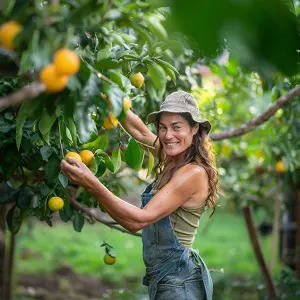
Emma Hudson
Forestry AuthorEmma's experience in farming shapes her detailed guides on gardening and farming tools, providing practical, actionable advice grounded in real-world experience. Her work targets both newcomers and experienced farmers, aiming to enhance their practices with a mix of traditional wisdom and modern techniques. By making complex agricultural concepts accessible, Emma's guides serve as valuable tools for those navigating the challenges of contemporary farming, offering strategies for sustainable success.


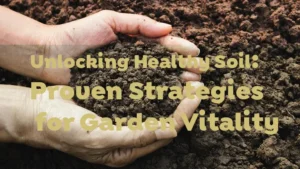
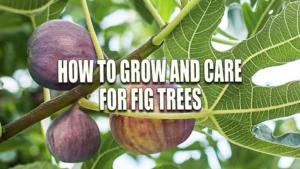

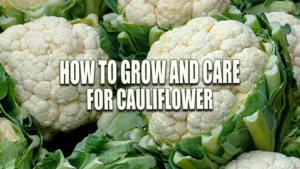







Leave your comment